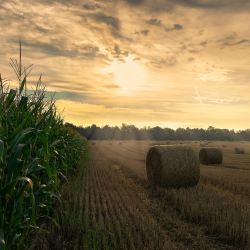The recent Office of Science and Technology Policy report demonstrates that the federal government is not serious about feeding the country or developing a strong bioeconomy. The White House’s assessment contains decades-old unworkable initiatives. So we ask: Is the administration moving a ‘bold’ and ‘innovative’ agenda – or one simply focusing on climate initiatives, while China advances its bioeconomy?
Bioeconomy refers to that portion of the economy, products, services, and processes derived from biological resources (e.g., plants and microorganisms). The bioeconomy encompasses multiple sectors, like agriculture, textiles, chemicals, and energy).
In March 2023, the Office of Science and Technology Policy (OSTP) published a report entitled “Bold Goals for U.S. Biotechnology and Biomanufacturing,” as required by an Executive Order of President Biden. The report provides a vision from several federal agencies, including the Departments of Energy, Agriculture, Commerce, Health and Human Services and the National Science Foundation, for “transforming the U.S. economy to achieve net-zero greenhouse gas (GHG) emissions by 2050”. Since the report is primarily focused on climate, it was notable that EPA was not included.
The OSTP report calls for using agricultural products, like corn stover [1], to produce energy. On its surface, using agricultural biomass for energy (i.e., corn to ethanol) has financially benefited agricultural producers and fermenters, but when considered in light of the environmental impacts, it has not moved us towards our climate goals.
- High-intensity corn production for ethanol benefits growers by increasing the market value for corn and soy and producing distiller grains (a high protein fermentation product) for feed.
- The EPA reports the negative impacts are not insignificant and includes diminishing groundwater supplies and quality, nutrient runoff creating downstream algal blooms (i.e., red tides), and increasing GHG emissions.
- Ethanol provides little benefit when added to auto fuels except for providing a talking point about reducing the use of fossil fuels.
- Harvesting agricultural biomass, like corn stover, to create energy deprives the soil of important nutrients, which have to be replaced using fertilizers (which the Paris Agreement hopes to eliminate). Corn stover is used to return nutrients to the soil, and it is also used to make silage as an animal feed and is an integral part of livestock production.
- Increasing corn and soy prices that result from using agricultural products for biofuels pose a hardship for marginal consumers around the planet.
For the past few decades, there have been attempts to convert forest biomass into energy. But our ability to collect, transport, and ferment these lignocellulosic products (dry plant manner) into ethanol is not economically viable. Some facilities can produce fermentation products of higher value than ethanol which improves the profitability of these operations, but the overall impact is negligible. Finding a viable use for lignocellulosic biomass could reduce the fuel on forest floors and the risk and extent of forest fires.
Another agricultural byproduct that should be considered as a biofuel is used or spent restaurant oil, yellow grease. In addition to providing a diesel fuel substitute, it would eliminate the concerns of introducing trans fats and toxic chemicals into animal feed. Ramping up agriculture production to produce biofuels will only stress current resources like water quality and availability and soil nutrients while not achieving the stated goal of reducing GHG emissions by 50% by 2030. Let agriculture focus on food, feed, and fiber. Anything else pushes the world closer to starvation, especially when foreign governments are shutting down agricultural producers to achieve the Paris Agreement climate goals.
The report touts novel uses of biotechnology but fails to identify the fact that all biotech crops and livestock benefit the environment. Biotechnology is improving crop and livestock genetics and, in turn, improving agricultural efficiencies, production capacity, and environmental stewardship. For instance, Bt-corn and Bt-cotton, while increasing yield, reduces:
- the need for more land (i.e., protects critical rain forests)
- erosion by reducing tractor trips across the field to apply sprays (and this reduces algal red tides)
- the use of pesticides, especially those that kill non-target species
- GHGs
- groundwater contamination from pesticides
- the use of fossil fuels.
GT-soy increases yield while replacing more toxic pesticides with a safer pesticide (i.e., glyphosate). They reduce GHGs and the manual labor for weeding (a difficult task performed primarily by women in developing countries).
The Artic™ apple and the Innate™ potato reduce waste by slowing browning; biotech tomatoes soften slower as they ripen, extending shelf life and reducing waste. Biotech papaya controls a devastating disease and thereby increases yield. The biotech salmon is improving feed conversion, and a pig resistant to the porcine reproductive and respiratory syndrome controls a costly and painful fatal swine virus. The report fails to understand that many more exciting advances in production agriculture await. These advances will benefit our climate, but only if we remove the greatest hurdle to realizing more biotech advances and strengthening our bioeconomy, federal regulation.
The current system for approving new biotech products is slow and costly and does nothing to protect consumers, the environment or improve animal welfare (i.e., its main purposes). The current system also favors large biotech companies (i.e., Bayer, Syngenta, BASF, Corteva) by keeping smaller entities out of the marketplace (i.e., universities, USDA-ARS laboratories, and small companies), which reduces competition and innovation. If the U.S. is serious about achieving climate goals, get the government out of the way and refrain from telling the free market what products to develop. Innovators are more creative than federal bureaucrats, but as long as the government boot is on their throats, they can’t do what they do best (i.e., solve problems).
A truly ‘bold’ approach would be to eliminate or greatly minimize the federal regulation of biotech crops and livestock.
While we struggle with a ‘climate agenda’ and pretend to be serious about crucial issues, like the American Bioeconomy, China, our biggest competitor, is developing or stealing new and innovative products. The initiatives described in the OSTP report are evidence that the U.S. government cannot build a strong bioeconomy because it does not understand the importance of innovation by the private sector or the proper role of government. To compete, we must eliminate federal regulations of questionable value stifling innovation.
The opinions expressed here are solely those of the author and not of any organization with which he is affiliated.
[1] Corn stover refers to stalks, leaves, and cobs remaining after corn harvesting.

